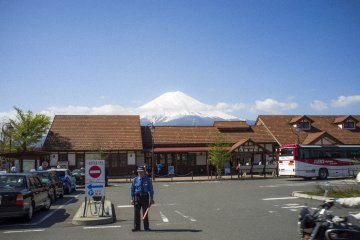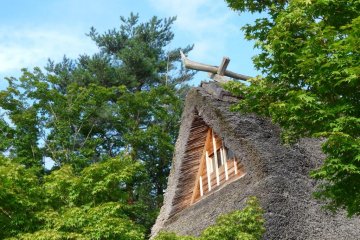Of the five lakes cooling Mt. Fuji’s toes, Kawaguchiko is the most popular and most developed.
Fortunately, this has not rendered it a concrete mess - a mountainous backdrop frames a pleasant, relaxed town with no shortage of restaurants, high-quality onsen and accommodation to suit every budget.
The fastest, cheapest and most efficient way in would be one of the regular highway buses running out of Tokyo, typically Shinjuku. Trains are available, though they are more expensive, indirect and generally less preferable. Book a day in advance during climbing season as there will be plenty of competition for places.
Kawaguchiko’s spectacular views and cool climate compliment its strong travel links, not to mention its excellent location for those hoping to scale Japan’s tallest mountain. Numerous local buses congregating around the town’s railway station allow quick and easy access to anywhere you should wish to visit in the beautiful Fuji Five Lakes region, with tourist information and travel direction available from English speaking staff.
The position and connections of Kawaguchiko mean you can be in Aokigahara, the Fifth Station of Fuji or many of the region’s other lakes within an hour by bus or train.
Those of you focused on climbing the great mountain herself will be glad to know of a regular bus from the town’s train station offering easy passage to the fifth station, the halfway mark recommended as the starting point for casual hikers.
The banks of the lake prove a pleasant place for a picnic or evening beer. A bridge spanning the centre of the lake grants easy access to the north shore and some of the best views of the iconic Fuji.
Regarding these views, travelers should be aware that Fuji is notoriously shy and seems to have an almost gravitational effect upon regional clouds. Even when the sky may be an unbroken blue from horizon to horizon, the mountain will typically be completely obscured.
It is an unfortunate affair that most visitors will seek the mountain out in July and August, with the intention of scaling it. This is when the heat haze and humidity make clear views rarest. The best viewing periods are in Autumn and Winter when cool, clear air and a snowy peak reveal the Fuji immortalised in art, legend and postcard.
If you’re there in summer, I recommend getting up early in the morning, when the air is clear and Fuji herself too drowsy to have gathered many clouds. Sometimes, she will allow a glimpse in the cooler evening.
My personal, favourite view came atop Tenjoyama, a mountain reached by a cable car based within the town. A 700 yen round trip (a cheaper one way ticket requires a walk back down) reveals a clear view of the mountain and all at her feet in one direction, with a panorama of Kawaguchiko lake and the mountains bordering it in the other. Be aware that the last cable car down is at six o’clock, after which a round trip ticket also features a walk back down.
The cable car’s bizarre English narrative is a bonus.









